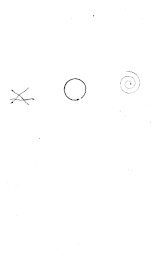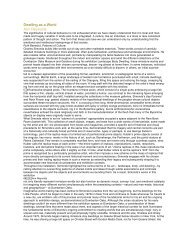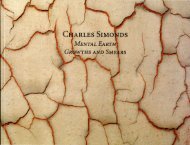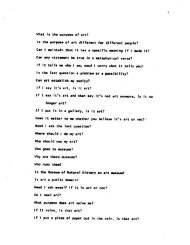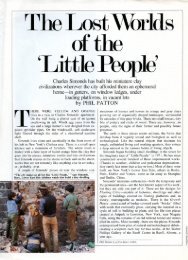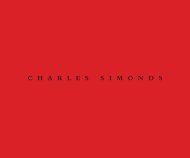Read Catalog - Charles Simonds
Read Catalog - Charles Simonds
Read Catalog - Charles Simonds
Create successful ePaper yourself
Turn your PDF publications into a flip-book with our unique Google optimized e-Paper software.
piece, is evident in the sudden eruption, in the course of his work, of the<br />
Floating Cities project. He who tries to interpret it from a sculptural point of<br />
view can only be deceived, for Floating Cities is a genuine architectural model.<br />
Born out of a reflection on the nature of human habitat, Floating Cities is<br />
presented as a real dimensional project and introduces into its concept the<br />
economic and ecological dimensions that are excluded from the universe of<br />
the Little People.<br />
Floating Cities reflects <strong>Simonds</strong>'s continual attraction to different forms of life,<br />
social as well as biological, his care in apprehending these forms and, through<br />
his comprehension, re-creating a new rapport with society. And in this light,<br />
the universe of construction with which the name of <strong>Simonds</strong> is now associated<br />
is doubtlessly only provisional, and may well give way, in his work,<br />
to any other form of expression that one day seems to him to have the power<br />
to express, other than by a fiction, a true insight.<br />
For <strong>Charles</strong> <strong>Simonds</strong>, the nature of art is metaphysical in essence. He belongs<br />
to the generation of post-minimal artists who cannot content themselves with<br />
formalist criteria, but who attempt to discover both the why and the how of<br />
art. Today, as for the man who left the imprint of his hand at Altamira, in<br />
the motionless movement of art are the same questions, those that Paul<br />
Gauguin naively wrote on the bottom of his painting: "Who are we? Where<br />
do we come from? Where are we going?"6 To these unanswerable questions,<br />
life and art suggest provisional solutions, which are all the stronger since we<br />
were not expecting them, but with which we seem familiar from the outset.<br />
Thus we have been, at all times, contemporaneous with <strong>Simonds</strong>'s Dwellings.<br />
Footnotes<br />
I<br />
Translated from the French by Terry Ann R. Neff.<br />
2<br />
Michel Tournier, Vendredi ou les limbes du Pacifique, Paris: Editions Gallimard, 1972,<br />
p. lp.<br />
3<br />
Bib. I 1975, <strong>Simonds</strong> and Abadie, p. 5·<br />
4<br />
Ibid., p. 61.<br />
5<br />
Ibid., p. so.<br />
6<br />
"D'ou venons nous/Que sommes nous/Oii allons nous," 1897-98. Oil on canvas.<br />
Museum of Fine Arts, Boston.<br />
34



